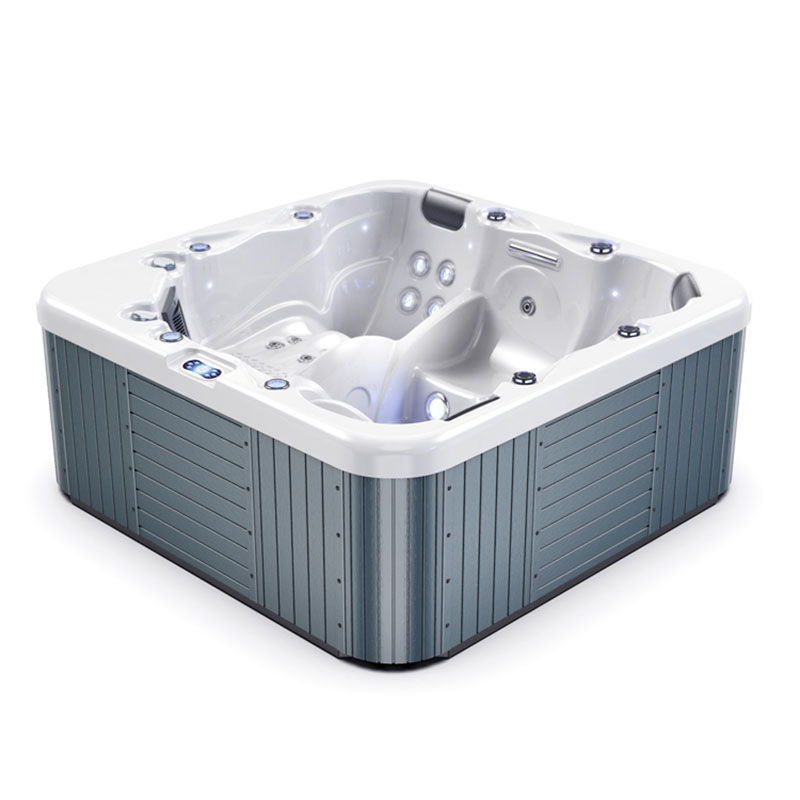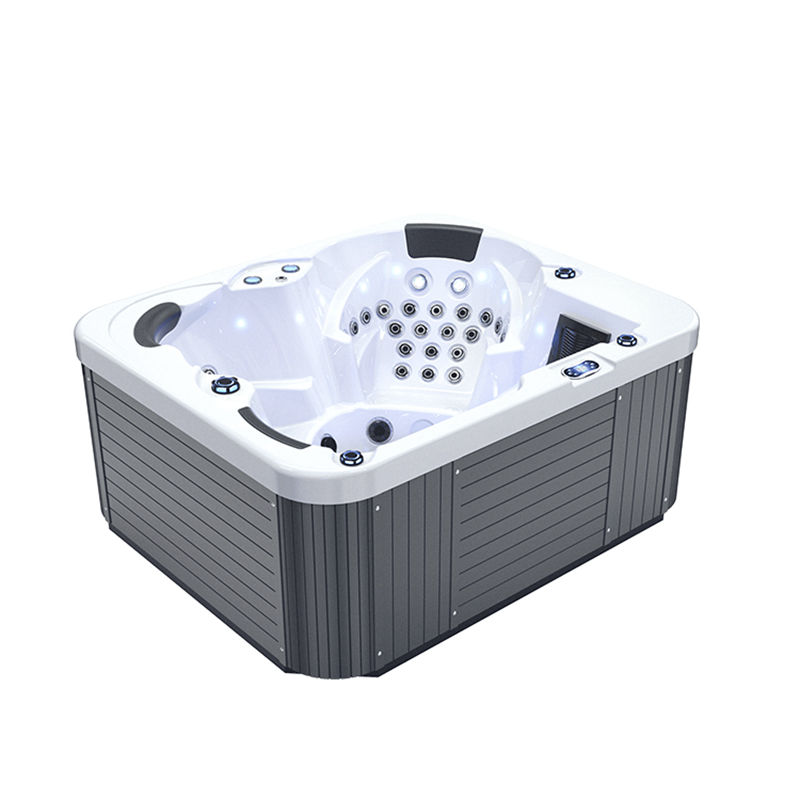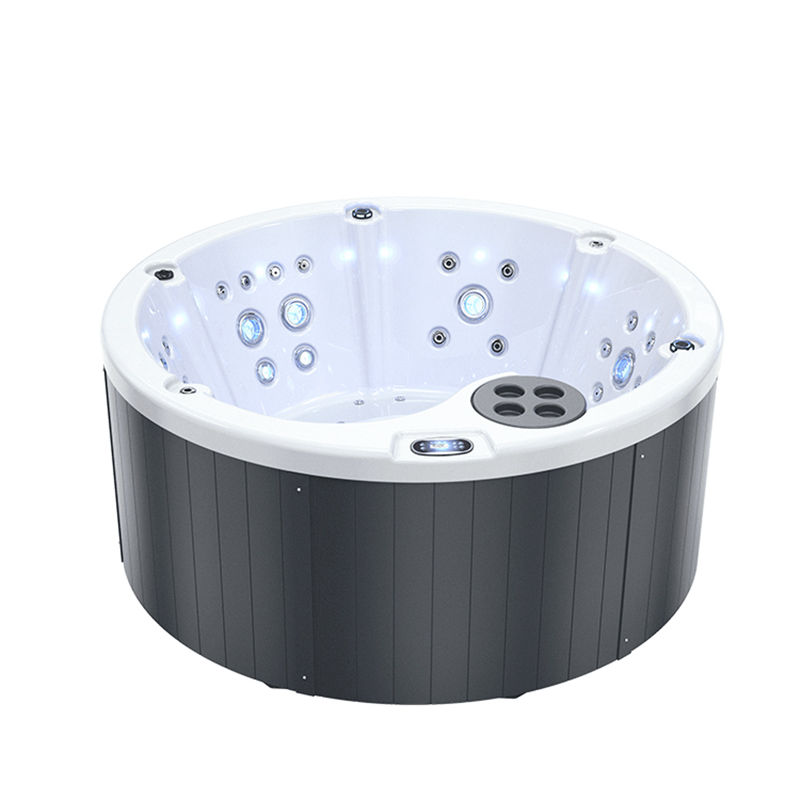During the cold winter months, outdoor hot tubs are an ideal way for many to escape the cold and relax. However, for those who choose to install a 110V outdoor hot tub, whether the water can maintain its temperature during the winter becomes a key concern.
Compared to traditional 220V hot tubs, 110V hot tubs have a relatively lower heating capacity, which limits their heat retention and operating efficiency. So, can a 110V outdoor hot tub effectively maintain its heat during the cold winter months? What key role does voltage play in hot tub performance?
This article will delve into the operating principles of 110V outdoor hot tubs, their performance during winter use, and the factors that determine voltage's impact on hot tub performance.
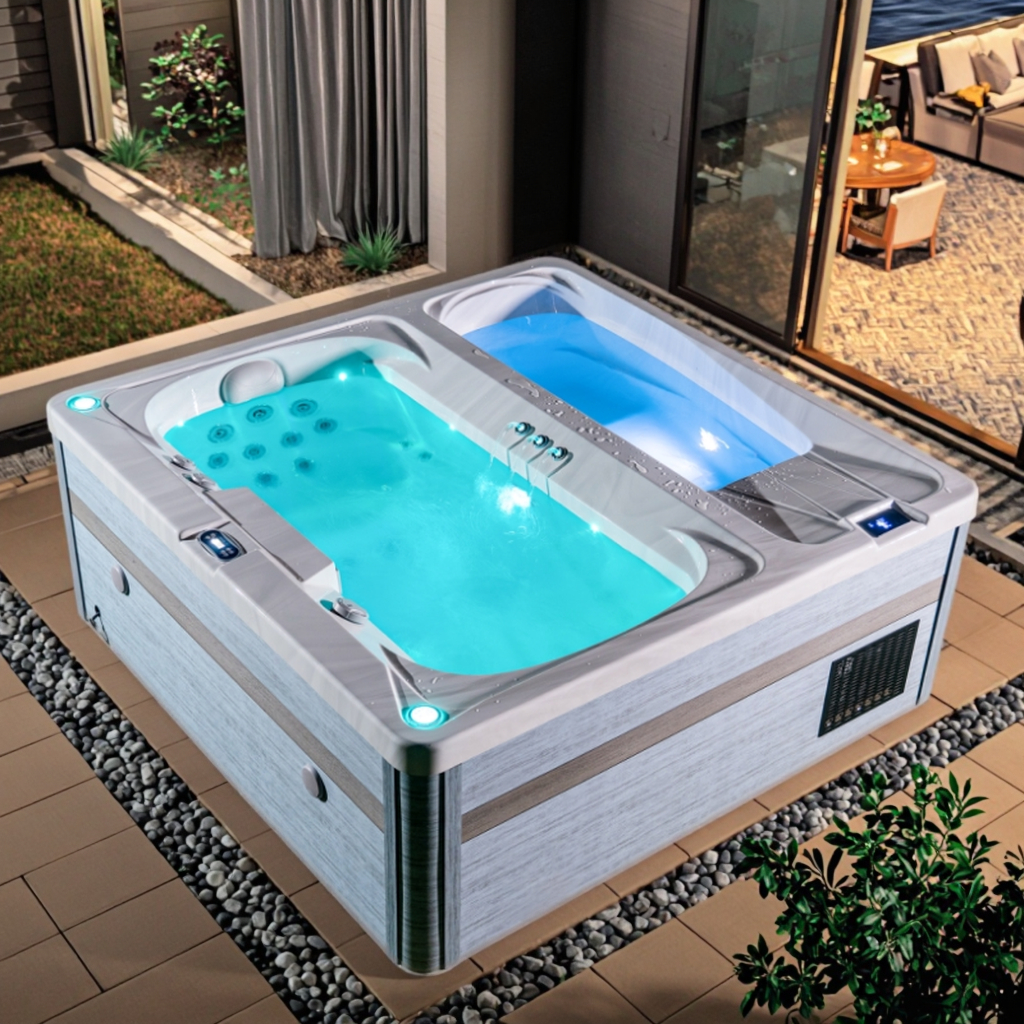
How do 110V hot tubs work?
110V hot tubs are often referred to as "plug-and-play" hot tubs because they require no dedicated electrical wiring; they simply plug into a standard household electrical outlet (110 volts) and are ready to use. Compared to traditional 220V hot tubs, 110V hot tubs use a smaller power source, resulting in a more limited heater capacity.
1. Heating Capacity of 110V Hot Tubs
· Lower Heater Power: 110V hot tub heaters typically draw between 1.5 kW and 2 kW, while 220V hot tub heaters typically draw 3 kW or more. This lower power consumption means slower heating, a difference that is particularly noticeable during cold winter months.
· Longer Heat-Up Time: Due to the lower power consumption, 110V hot tubs take longer to reach the desired temperature. For example, a 220V hot tub might only take a few hours to heat the water to the desired 104°F (40°C), while a 110V hot tub might take several times longer.
2. Ability to Maintain Water Temperature
Once a 110V outdoor hot tub reaches the target temperature, its ability to maintain the water temperature depends on two primary factors: insulation performance and the heater's sustained power output.
· Insulation: High-quality 110V hot tubs typically use superior insulation, such as multiple layers of insulation and high-density foam, to reduce heat loss. These features help outdoor hot tubs maintain water temperature, even when the heater is running at low power.
· Sustained Heating Capacity: Due to its lower power consumption, 110V hot tubs require more frequent heater activation to maintain water temperature, especially in winter. When the outside temperature is low, the heater may not be able to quickly return the water temperature to its set point, causing the water temperature to drop.
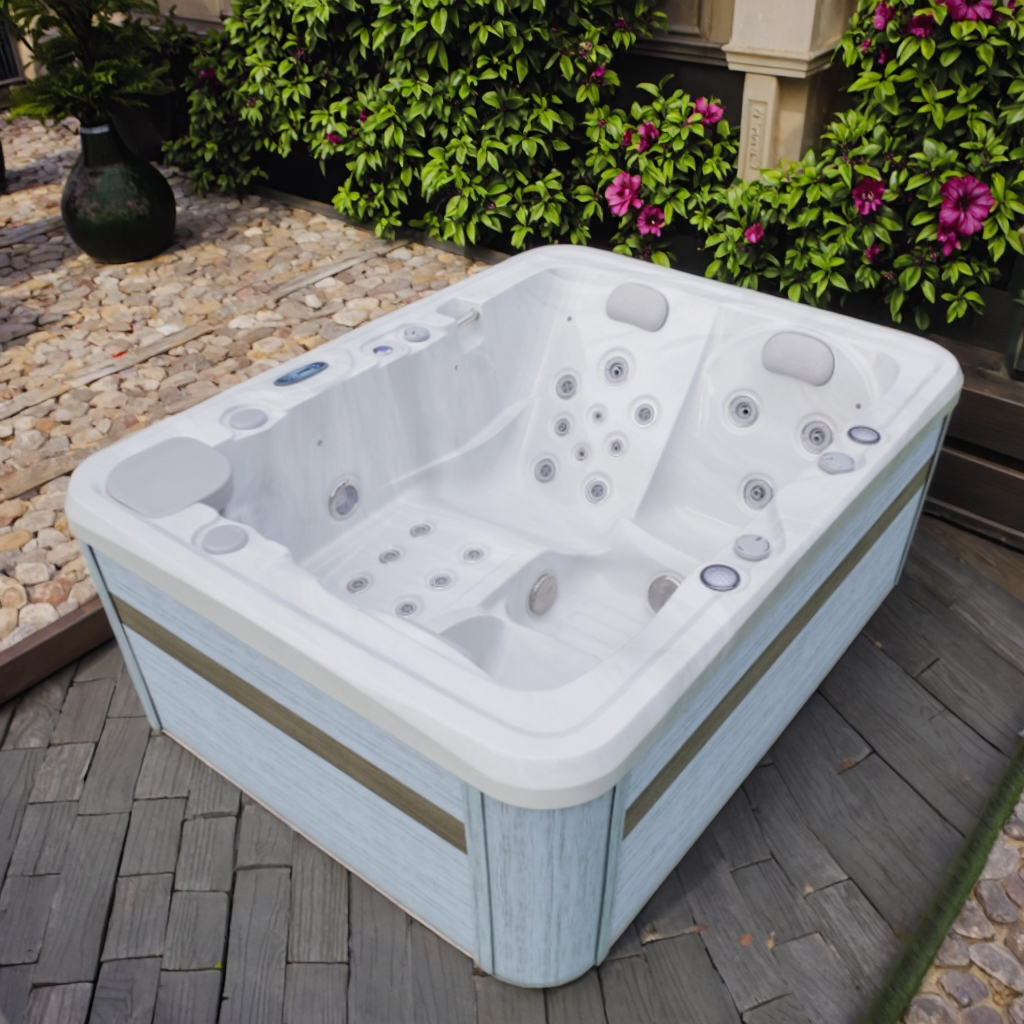
How does a 110V hot tub perform in winter?
In winter, especially in extremely cold conditions, hot tub insulation presents significant challenges. 110V hot tub users may encounter unique limitations during winter, especially during extended use or when the outside temperature is extremely low.
1. Challenges of Maintaining Water Temperature
In winter, especially when the outside temperature is near or below freezing, a 110V outdoor hot tub may struggle to maintain a high temperature. Due to the limited output power of the heater, the water temperature may gradually drop over time. This is especially true if the massage function or jets are running for extended periods. These devices further consume the system's power and slow the heating process.
· Temperature Drop During Extended Use: If you plan to use your hot tub for extended periods during the winter, you may notice a gradual drop in water temperature, especially when the outside temperature is low. The heating rate of a 110V outdoor hot tub heater may not keep up with the rate of heat loss, resulting in a drop in overall water temperature.
· Performance in Extremely Cold Weather: In extremely cold climates (such as sub-zero temperatures), a 110V outdoor hot tub may take a long time to heat up and may not even reach the desired water temperature. To prevent a rapid drop in water temperature, you may need to reduce your usage time or choose appropriate insulation, such as a thicker tub cover.
2. Additional Insulation Measures
To maximize the use of your 110V hot tub in the winter, you can take some additional insulation measures to reduce heat loss and heating time:
· Using a High-Efficiency Insulated Cover: An efficient insulation cover is crucial for reducing heat loss. Especially during cold winter months, using a thick, insulated cover can effectively prevent heat loss at night and help maintain the water temperature when the tub is not in use.
· Strengthen the tub's exterior insulation: Users can use an insulation cover or additional insulation material on the outside of the tub to reduce heat exchange between the tub and the outside environment. This can help outdoor hot tubs better maintain their water temperature during the winter.
· Regularly monitor the water temperature: In extremely cold weather, it is recommended that users regularly monitor the water temperature in their hot tub. If the water temperature drops significantly, it may be necessary to temporarily unplug the tub to allow the heater to return the water to the desired temperature.
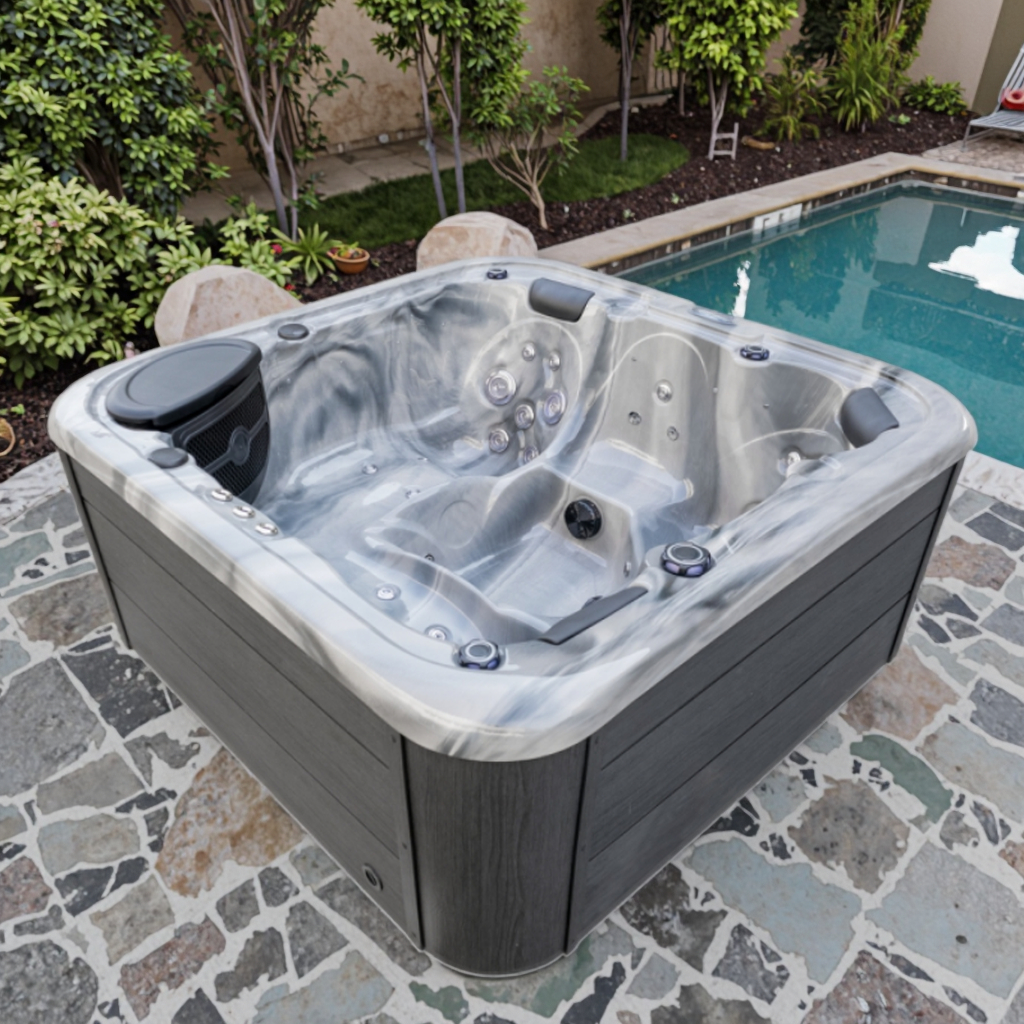
What determines the voltage of an outdoor hot tub?
Voltage is a key factor in outdoor hot tub performance. It directly determines the tub's heating speed, pump performance, and overall operating efficiency. Understanding the role of voltage is crucial when choosing an outdoor hot tub.
1. Heating Speed
Voltage is a key factor influencing the heating speed of an outdoor hot tub. A 220V outdoor hot tub, due to its higher heater power, heats water to the desired temperature more quickly. In cold weather, a 220V heater can typically reach and maintain a water temperature of 104°F within a few hours. However, a 110V hot tub, due to its lower wattage, heats more slowly, and especially in winter, takes longer to reach the desired temperature.
· High-voltage heaters (220V): These heaters offer higher wattage and can typically heat large volumes of water in a short period of time, making them suitable for extended winter use. Heaters typically draw 3 kilowatts or more, enabling them to quickly heat and maintain high water temperatures.
· Low-voltage heaters (110V): These heaters offer lower wattage and slower heating, making them suitable for warm climates or short-term use. In cold climates, 110V heaters may not be sufficient for extended use.
2. Pump Performance
Voltage not only affects heater performance but also the hot tub's pump. The pump in an outdoor hot tub is responsible for driving the water flow and the massage function of the jets. Voltage levels affect the pump's power output.
· 220V systems: These systems typically support multiple powerful pumps, enabling the hot tub to provide powerful water flow and massage effects. Higher voltage allows the pump to maintain efficient heating while continuing to operate the massage function without affecting water temperature.
·110V systems: These systems typically support a smaller pump, resulting in weaker water flow from the jets. Due to power constraints, the pump and heater in 110V systems often cannot operate efficiently simultaneously, and the water temperature may drop when the user uses the massage function.
3. Operational Efficiency and Cost
Voltage also directly affects the energy consumption and operating costs of an outdoor hot tub. While 220V hot tubs heat up quickly and can heat water to the desired temperature in a short period of time, they also require a relatively high amount of electricity. Although 110V outdoor hot tubs use less power, their longer heating time may not necessarily reduce their overall energy consumption compared to 220V hot tubs.
·220V hot tubs: While they heat up in a shorter time, the higher power consumption of the equipment may result in higher instantaneous power consumption. Therefore, despite the shorter operating time, the instantaneous electricity bill is higher.
· 110V hot tubs: Heat up time is longer. While hourly energy consumption is lower, the constant heating required means that over time, energy consumption may not be lower than that of a 220V system.
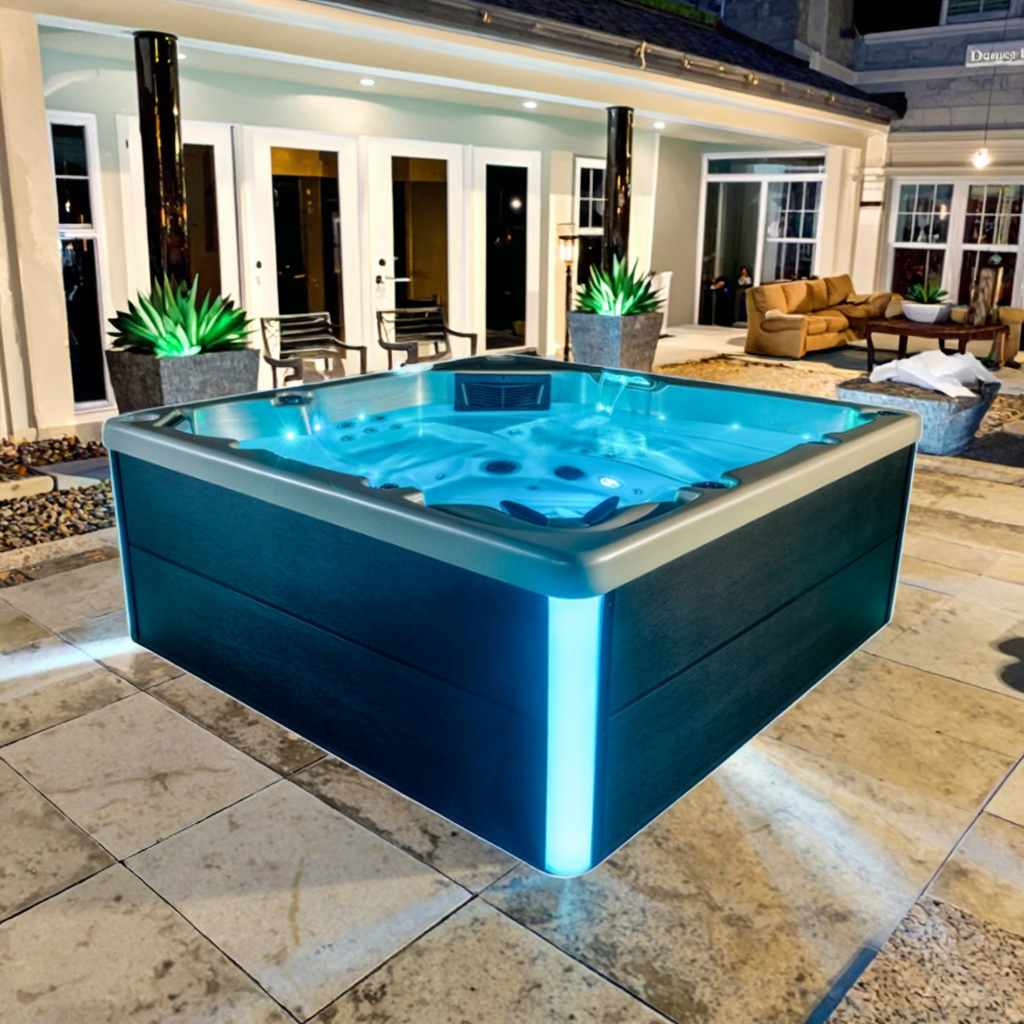
How do you ensure product quality before shipment?
Quality control is at the core of our manufacturing process. Every spa and swim spa undergoes multiple quality inspections, including material checks, water testing, electrical safety tests, and pressure testing. Our team of over 20 engineers and quality experts ensures that each unit meets our high standards before leaving the factory.
As a high-quality spa supplier, we also allow clients to request third-party inspections or video call verifications. Buy from us with full confidence—we are a certified company with low defect rates and reliable after-sales service.


